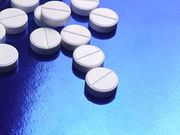Patients at higher risk for stroke or MI derive greater benefit from pioglitazone versus low-risk patients
MONDAY, Sept. 18, 2017 (HealthDay News) — For patients after an ischemic stroke or transient ischemic attack, pioglitazone is associated with greater benefit for those at higher risk for stroke or myocardial infarction (MI), according to a study published online Sept. 18 in JAMA Neurology.
Walter N. Kernan, M.D., from the Yale School of Medicine in New Haven, Conn., and colleagues conducted a secondary analysis of a trial of pioglitazone for secondary prevention among patients with an ischemic stroke or transient ischemic attack and insulin resistance. Patients were stratified for risk of stroke or MI within five years; the efficacy of pioglitazone for preventing stroke or MI was calculated within each stratum.
The researchers found that the five-year risk for stroke or MI was 6.0 percent in the pioglitazone group compared with 7.9 percent in the placebo group, among patients with lower baseline risk (absolute risk difference, −1.9 percent; 95 percent confidence interval, −4.4 to 0.6 percent). The risk was 14.7 and 19.6 for patients at higher risk in the pioglitazone and placebo groups, respectively (absolute risk difference, −4.9 percent; 95 percent confidence interval, −8.6 to 1.2 percent). Similar hazard ratios were seen for patients below or above the median risk (0.77 versus 0.75; P = 0.92).
“After an ischemic stroke or transient ischemic attack, patients at higher risk for stroke or MI derive a greater absolute benefit from pioglitazone compared with patients at lower risk,” the authors write.
Two authors disclosed financial ties to the pharmaceutical industry.
Copyright © 2017 HealthDay. All rights reserved.








